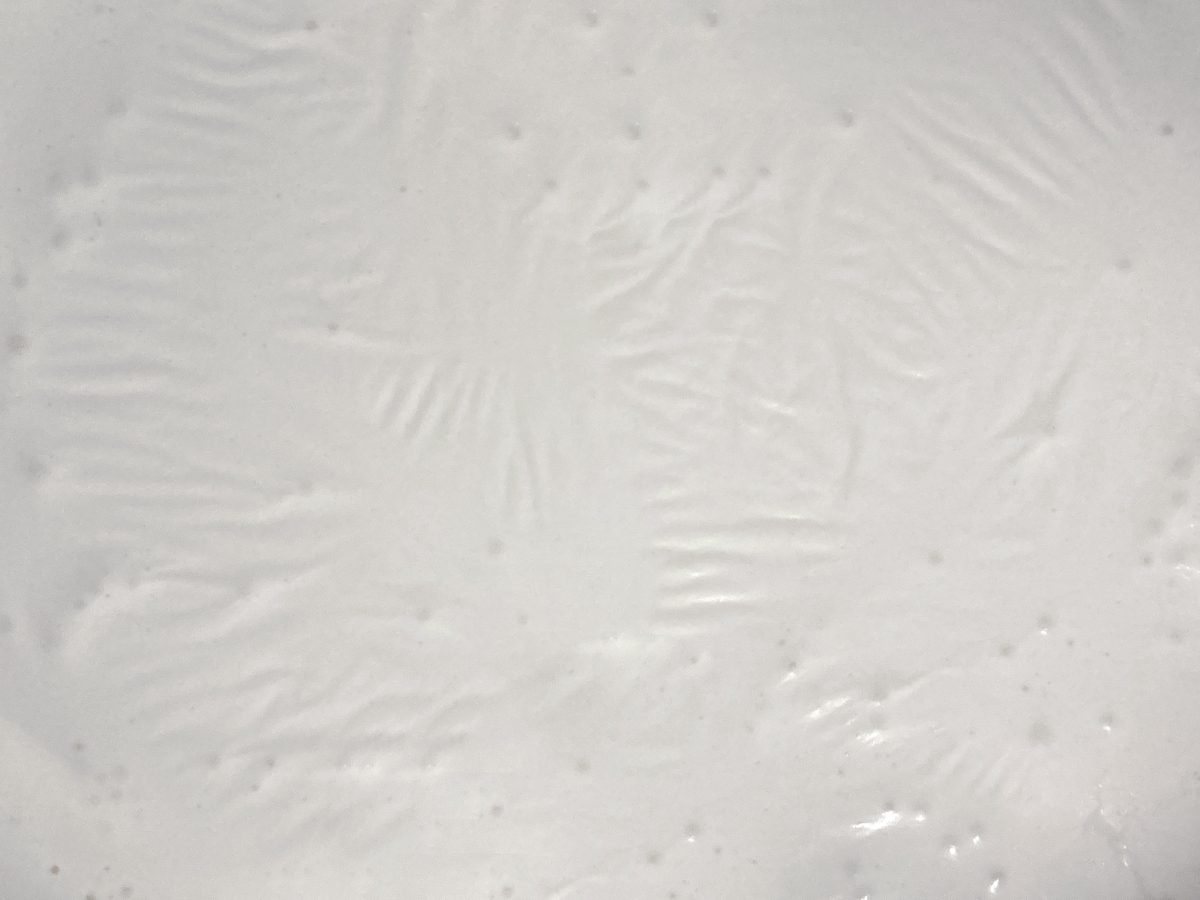Grzegorz Sztwiertnia. Melanosis
2022-10-28 - 2022-12-16

Description
The death shroud has no pockets
(Jewish wisdom)
He made darkness his hiding place
(Psalm 18)
Everything is on the move – Art should be still
(Ad Reinhardt)
Melanosis is dark brown pigmentation of tissues or organs that is caused by the accumulation of a dark, almost black pigment – melanin. In humans it develops in the skin, hair or choroid, leaving only one channel for light to reach the inside of the eye: the pupil. The pupil is the black hole through which everything we look at enters. "Melanosis" is also the title of an exhibition featuring recent oil paintings (168 x 168 cm and 155 x 155 cm), depicting various types of surgical drapes used to cover bodies undergoing medical operations. Giving the impression of "abstraction", they are literal representations of actual drapes. Their form and dimensions have been adjusted to the shape of the human body and the specific surgical procedure, and the appropriate openings located in the assigned places allow direct access to the interior. Surgical drapes are thus a type of drapery – a popular motif in the Baroque period, often combined with the theme of vanitas. In the view of the exhibition's author, it is the surgical drape that is the contemporary shroud with which it is customary to cover a corpse, coffin or catafalque. The shroud serves both the (still) living and the dead body. It covers, but does not hide anything.
In their concept, format and the procedure used, Shrouds refer to the most important paintings in the history of the 20th century painting, which are the last black paintings of American painter Ad Reinhardt (1913 – 1967), which he painted (exclusively) from 1960 until his death (heart attack). These oil paintings on canvas, enclosed in a square measuring 60 x 60 inches (152.4 x 152.4 cm), referencing the so-called Vitruvian man, divided into nine equal square fields forming something like a Greek cross, titled "Abstract Paintings" – were a sensible and profound look at the responsibilities and possibilities of painting (which the painter included in texts collected under the common title "Art as Art"). Perfectly matte, flat, hand-painted (no gloss, no texture, no lines, no hard and soft edges), abstract, non-objective, extra-temporal and extra-spatial, invariable, not entangled, disinterested, self-conscious (no unconsciousness), ideal, transcendent, unaware of anything except art (Ad Reinhardt) – they were painted with essential oil paste with unique optical properties, which – giving the effect of a dense, velvety, light-absorbing, perfectly matte surface – slows down the distribution of visual stimuli. Obstruct paintings. "Slowness was an end in itself, a movement of resistance" noted Arden Reed in "Ad Reinhardt's Black Paintings: A Matter of Time''. Such a painting is "a free, impossible to photograph, unique, incomprehensible icon" (Ad Reinhardt), effective only "live" – because "the best works are always the most difficult to reproduce" (Harald Szeemann).
/Grzegorz Sztwiertnia/
/Translated by Elżbieta Rodzeń-Leśnikowska/
